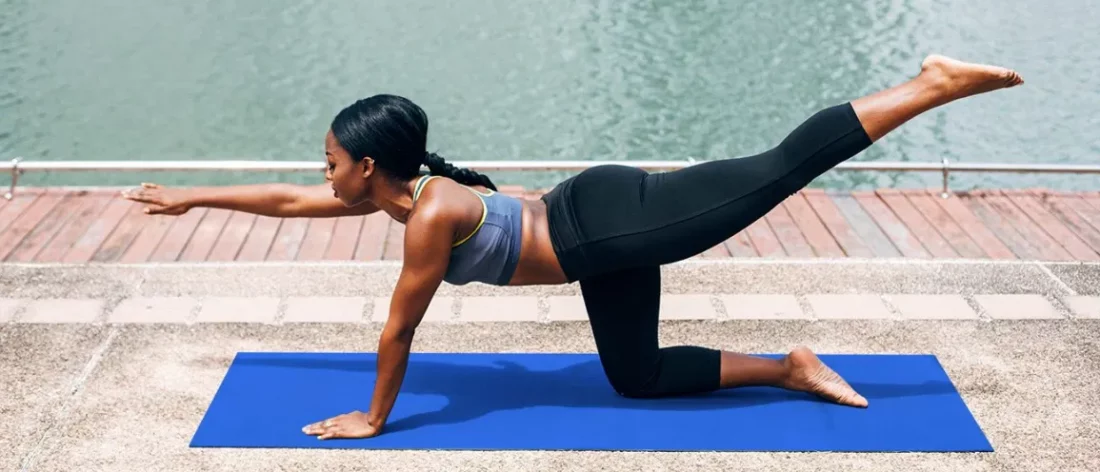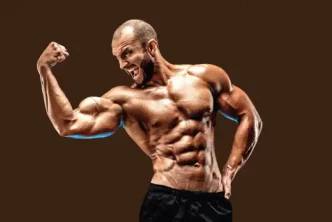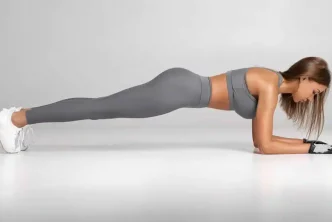An exceptionally famous mental and actual discipline, Yoga can be essential or highly mind-boggling. The practices and positions require movement between development, breathing, and stance. Assuming you are an amateur, it isn’t, by and large, suggested that you start with the intricate positions. It is also great to call attention here that Yoga poses expect groupings to amplify its motivation. Underneath, we will show you the three essential and most well-known Yoga poses for beginners.
Yoga has been with us for millennia, and how it can, in any case, be viewed as a pattern as of recently is for sure surprising! But, as it has been polished for an extensive period, it figured out how to continue to advance at such a consistent speed. For that reality, the commonly utilized forms of Yoga nowadays, which generally include comfortable mats, stretch jeans, and many developments, are new.
These advancements won’t generally vitiate the customary physical centers of Yoga. For sure, actual Yoga will, for the exceptionally least, foster solid, adaptable bodies; Yoga practices should eventually include a quiet, receptive outlook and otherworldly illumination.
Types of Yoga Poses for Beginners
There are different gatherings of yoga stances, and each performs unmistakably. That is the reason it’s consistently intelligent to rehearse a scope of activities, so you’ll profit from a complete exercise. Yoga poses, in all actuality, do share for all intents and purposes: they form a comprehensive framework to foster both your solidarity and adaptability. Many wounds are brought about by muscles that simply don’t have the versatility they should while being extended to that muscle’s limit. Creating Yoga as a piece of your activity routine can assist with lessening the event of such harm.
a. Standing Yoga Poses: At any point, had anyone advised you to quit slumping? Is it terrible for you? An unfortunate stance can cause many issues, from a throbbing painfulness to stomach-related problems because your organs are affected. Standing Yoga poses further develop balance and keep a proper perspective. They accomplish this by delicately fixing and extending your back. They reinforce the muscles in your legs since you are remaining.
b. Seated Yoga Poses: Situated yoga poses are among the most unwinding of all the yoga stances. Indeed, they’re unwinding to the point that they are used for most of the reflection work out. They advance the adaptability of the vast majority of the joints and muscles in the body. This is because many gatherings can be designated immediately. For instance, the prominent Lotus position typically extends the hips and legs. Add a few chest area developments to it, and you can pinpoint the neck, shoulders, and arms in a flash.
c. Bends (Forward and Backward): Many people will encounter some measure of back torment throughout their lives. Twists are yoga poses that can mitigate this by extending and fortifying the muscles of the back and bears. The arrival of solid pressure can go quite far towards making some, while perhaps not all, of the aggravation disappear. These stances additionally keep up with the strength of your spinal segment, and we as a whole skill vital, that is. Forward twists help keep your hamstring muscles adaptable and this can forestall squeezing while doing different activities like vigorous exercise or running.
d. Balance Poses: Balance poses can be one of the most complex yoga stances to dominate. It isn’t so much that they’re especially troublesome. It’s simply that the vast majority aren’t even mindful of attempting to adjust. You might feel that you balance regularly on two legs, so it could never be that troublesome in a class. The thing that matters is that in style, you’ll be trying, and, bizarre as it might appear, that same mindfulness can be your destruction. That is why mentors will train you to gaze directly ahead and center around a specific spot. This will, in general, get your brain out of the situation so your body can dominate and is a decent practice with all Yoga poses.
Each gathering of yoga poses serves an alternate capacity. It is suggested that you practice something like one situation from each set since this will give you an overall round daily schedule. In addition, they could be utilized as a get ready for more arduous activities. Right away, getting into a portion of the poses might appear to be troublesome, particularly if you’re not used to extending. However, the discomfort that you feel will disappear with time, and you will regard yourself as becoming more adaptable. You could even understand that the joint torments you’ve experienced for years are scarce there any longer.
However, whichever reason one might set up at the beginning of a yoga practice is sensible. Furthermore, like anything else, this training should begin with the nuts and bolts. Thus, Yoga poses for beginners should start with these eight fundamental poses.
1. Baddha Konasana
The second of the three Yoga poses for beginners is called Bound Angle Pose, a posture you can move into from Siddhasana. To do this, just put the bottoms of your feet together. This will look like an Indian squat. Twist the knees out to the sides and spot your hand over the feet, interweaving the fingers and the toes together. Breathe in and press the hips down, arriving at the head upwards to extend the spine. Press the chest forward and drop your shoulders very much like the Siddhasana present. While breathing in and breathing out, keep the tongue at the roof of the mouth and shut your eyes. In any case, you want to gaze or take a gander at your “third eye” or your forehead while your eyes are closed. Breathe in and breathe out multiple times.
2. Wide Leg Forward Fold
This form might give a slight disappointment to beginners who have tight hamstrings from the start. Yet don’t accept that this ought to include hands or head-on-the-floor forms immediately. Encountering the evident happenings to your body as the training goes on is a higher priority than arriving at a specific spot or form on quick occasions.
Important:
With hands-on your hips, stand with feet open on your mat. Shoulder bones should be together, down on your back and neck long. With one point at your impact point, one more energy at the cushion under your enormous toe, and the final remaining one under your little toe. Imagine that you are pulling the roots from the point you’ve established under your toes unto your hips. This can probably enact the muscles in your legs and assist you with making a decent arrangement. Breathe out while keeping your back straight; overlap your body forward at your hips.
Assuming you can make due, carry your hands the entire way to the ground. If you are not fit for arriving at the environment at this time, twist your knees with your hands put on your thighs. While you are keeping up with this representation, a couple of objectives should be understood. First, your spine should be kept long or reached out consistently – this advances better back arrangement and strength, which can assist with forestalling lower back injury.
The stands planted on the ground ought to be kept up with. The strength presented in this specific form should advance from these places – this goes feet strength better leg arrangement that can forestall wounds and keep you dynamic while in the posture.
3. Descending Dog
This is hailed as the most broadly perceived form in Yoga. Nevertheless, this could be certainly more testing than what anyone could expect from it. This is also a form that broadens your hamstrings. This can similarly be a calf, spine, and arm strengthener. You’ll use your whole body, so you should get into it intentionally. Stand with your feet equivalent and a hip distance on your mat. Yet again particularly like the former for, plant the stand. Take in and lift your hand to the sky.
Inhale out. Cross-over your hips forward until you can put your hands onto the ground and band your knees if fundamental. Then, at that point, make a step back with the objective that you will need to form an upside down condition of a V. (This is the urgent stance.)
Note:
You actually must have a long and more straight twist than your knees to be straight. In this way, expanding your spine is your need, so it is acceptable to have your knees bowed. With the state of the spine developed, stretch your legs however much you can. Root your heels to the ground to the extent that it cannot push them.
4. Crescent Pose
Bow present is the most popular beginning form in most yoga classes. A forward standing rush with arms expanded upward is the basic form of the sickle present.
Getting the correct form: From a forward twist, step your right leg in reverse, collapsing in on your left side leg for some timeframe.
Take as much time as necessary in balancing out your thrust. Whenever liked, you can deliver your back knee to the ground. Breathe in and put your hand on your front knee while lifting your body. If the formation feels better, in the following breath in, take a stab at raising your arms upward, straight up from your shoulder with palm looking in.
5. Warrior II
Fighter poses should be visible a staple in Yoga. Furthermore, Warrior II might conceivably be one of the most common varieties. Officially, there are three standing hero poses, many varieties have been made, and more arrangements of situated poses are existent. The most effective method to get into the appropriate posture:
Make a stride back from your forward overlay with your right driven into a long jump. While turning sideways, bend your back foot to level on the floor and correspond with your mat. Breathe in a while, drawing strength from your legs for firm establishment. Stretch out your arms outward onto your sides while you lift your chest area upstanding for them to be corresponding with the ground. Look past your center finger before you and inhale profoundly.
Important:
A firm establishment is a vital aspect of being a solid fighter. Keep those feet well established into the ground while attracting strength up to your hips. This can assist you with adjusting your posture appropriately to give you steadiness while in it. The back shoulder ought to be pulled down and back. There can be an inclination of your shoulder moving ahead; let it. Broaden your arms the entire way to your fingertips. A fighter doesn’t have components that lemon. The look you should resolve to is a fundamental part of the posture and not a simple one. You want the center that a hero ought to have when focusing on its prey, taking in that equivalent spot.
6. Siddhasana
This posture is additionally called the Accomplished Pose. To do this, you want to sit on the floor or your yoga mat with your legs crossed. It isn’t vital to accept the lotus position of the feet at this point, mainly since you are an amateur. Lay your hands on your knees or lap with your palms looking up. At the same time, you can involve the hand mudra, where you contact the tip of the thumb with the pointing finger while expanding the other three fingers forward. Attempt solidly squeezing the hip bone or your posterior to the floor, meaning you let the gravity pull your hips down and raise your head to extend the spine. Drop the shoulders and lean them back and press your chest forward. Loosen up your face and the whole body and rest your tongue at the roof of your mouth simply behind the front teeth. Breathe in and breathe out.
7. Patipurna Navasana
The last posture we will examine is additionally called The Boat. Here, you stay situated however you want to expand your legs forward, holding them straight and set up. Recline a bit and raise both your legs and feet up. Your arms and elbows should reach forward the same way a zombie does. Here, your legs and middle will form a letter V. Your arms will be a level line in the letter V. You want to move into this posture while breathing in. While breathing out, you will return your feet to the ground, actually equal and straight, and into a relaxed position.
8. Kid’s Pose or Balasana
A kid’s posture is one more kind of yoga present for beginners. This can be a stage where you can have the option to invest in some opportunity to chill off. During a yoga class, you will be urged to take this posture, assuming that you at any point chose to have some time off. This fills in as a break present in a class, regardless of whether fundamental or part of the program.
Getting into it: Do a stooping position, then, at that point, twist forward. If you find it difficult to bow down, you can put a square or a rolled-up cover over your calves, or a body under your knees. If planting your forward onto the mat is disappointing, your hands can fill in as square help. This form is not a functioning posture; it is a resting presence. In this way, assuming you at any point feel maddening, you need to change the stance. Yoga can be troublesome from the get-go, yet with little ingenuity on the line, all that will work out as you might need it to be!
The Benefits of Doing Yoga
Yoga is often viewed as not a very great exercise and an exercise in futility, yet it is truly one of the main exercises you can do. Yoga has many benefits for your body, both genuinely and intellectually. Men often particularly disdain Yoga in the light of the fact that it is just for ladies. Peoples additionally loathe Yoga since it’s excessively lengthy exhausting; and However, doing Yoga is vital for anyone engaged with wellness.
Yoga significantly helps me keep away from injury and remain adaptable for running. So what are generally the benefits of doing Yoga?
- Increases adaptability. I have forever been adaptable. However, Yoga has extraordinarily expanded it for me. Whenever I initially began, I could contact my toes while keeping my legs straight, yet presently I can push my head to the brink of collapse! Being adaptable lessens the opportunity of injury and consistently performs better in different exercises.
- Muscle Toning. By doing Yoga, you support your body weight in the moves. This increments strength, which helps tone your muscles.
- Increases center strength. Yoga requires a solid center to stand firm on a ton of the situations and positions, for example, descending and up canine, board poses, and seat present. You might not have an incredible center from the outset, but it will improve as you continue to do Yoga. Center strength is vital in sports.
- Better Balance. In Yoga, you are often in places on just a single leg, which requires excellent equilibrium, a ton of the rush positions need balance since you are holding them for as long as a moment. Proportion is significant in many games like vaulting and moving.
- Better Posture. Yoga helps give you a solid and great stance. This helps keep your body in line and permits you to stand and sit taller. better outlook will expand your awareness.
- Increases inner grease. Yoga greases up joints, tendons, and ligaments. Standing firm on those footholds requires specific muscles to cooperate. This scrubs your body and permits you to work better in proactive tasks.
- You are massaging of inner organs. By doing Yoga, you are kneading your inward organs and organs, which barely at any point get invigorated. The rubbing of these body parts assists one with staying away from sicknesses and assists you with working better inside.
- Refreshed. After a yoga exercise, I generally feel like a renewed people. Your body has been “purged” and kneaded. Blood has been streaming through your body, which helps flush out any excessive poisons. This can defer maturing and cause anyone to feel youthful and agile.
- Breathing. Yoga requires profound, controlled, and careful relaxing. This builds your lung limit, which further develops perseverance and performance. This is particularly significant for me while running.
There is additionally the Fountain of Youth Yoga (48 minutes) and Patience Yoga (little ways) from the One on One with Tony Horton exercises.
These two yoga exercises are extraordinary if you are in a rush or simply detest doing 90 minutes of Yoga. Yoga as a healing exercise/day. I also attempt to do Fountain of Youth Yoga on. Yoga has extraordinarily helped me, mainly through my running.
Frequently Asked Question (FAQs)
Q. How often would it be a good idea for you to do Yoga?
Ans: I suggest doing a yoga exercise no less than one time per week.
Q. What do yoga poses assist with?
Ans: Beat pressure, move back torment, and adapt these basic stretches and breathing activities. There are many intelligent motivations to add Yoga to your activity schedule. Yoga further develops muscle tone, adaptability, and equilibrium, and it helps you unwind and decrease pressure, thanks partially to its mark pranayama relaxing.
Q. How does Yoga get to the next level?
Ans: Yoga further develops strength, equilibrium, and adaptability. Sluggish developments and profound breathing increase bloodstream and warm up muscles while holding a posture develops grit.
Q. Where do yoga poses come from?
Ans: Yoga’s starting points can be followed to northern India more than 5,000 years prior. The word Yoga was first mentioned in old sacrosanct texts called the Rig Veda. The Vedas are a bunch of four ancient hallowed texts written in Sanskrit.
Q. How does yoga decrease pressure?
Ans: Yoga energizes mental and actual unwinding, which diminishes pressure and uneasiness. The basic stances advance adaptability, lower stress, and reduce torment. In addition, yoga poses might assist you with delivering actual blockages like muscle hitches, helping discharge feelings and pressure.
Q. For what reason is Yoga so famous?
Ans: Looking towards Yoga is a characteristic movement. The primary justification behind Yoga’s developing prevalence is the enormous scope of transmission of training. As the movement of the mind becomes more grounded on the planet, more peoples will move to Yoga throughout some period, and it will end up being the most famous approach to looking for prosperity.
Q. Would Yoga be able to transform you?
Ans: Whenever rehearsed accurately, yoga asana breaks down the mental, passionate, physical, enthusiastic, and clairvoyant impediments that restrain us from flourishing,” Stryker says. Yoga additionally shows you how to settle on better choices.
Q. Would Yoga be able to develop memory further?
Ans: New exploration recommends that Yoga further develops portions of the cerebrum that control memory, consideration, and temperament. Fortunately, everyone – including beginners – can add Yoga to their day-by-day practice routine to take advantage of these fantastic benefits.





